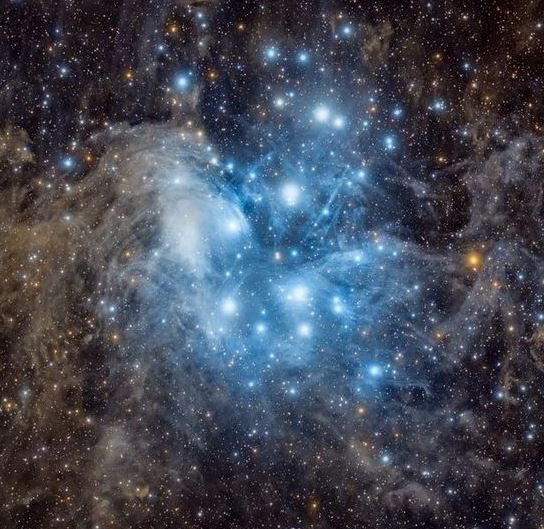Asterism, an intriguing term with applications in both astronomy and mineralogy, refers to the star-like patterns observed in the night sky and within certain gemstones. Understanding asterism helps us appreciate the beauty of our universe and the natural world. This article will explore the concept of asterism in both contexts, providing a detailed yet easily understandable overview.
What is Asterism?
Asterism can be defined in two primary contexts:
- Astronomical Asterism: In astronomy, asterism refers to a pattern of stars that forms a recognizable shape but is not officially classified as a constellation. It is often used to describe a prominent group of stars that are part of a larger constellation or are visible in the night sky.
- Mineralogical Asterism: In mineralogy, asterism refers to a star-like optical effect seen in certain gemstones. This phenomenon occurs when light reflects off tiny, needle-like inclusions within the gemstone, creating a star-shaped pattern on its surface.
Astronomical Asterism
In the realm of astronomy, asterisms are visible groupings of stars that are not part of the official 88 constellations but are still easily recognizable and widely known. These patterns are often used by stargazers to navigate the night sky and can be found within or across constellations.

- Examples of Astronomical Asterisms:
- The Big Dipper: Perhaps the most famous asterism, the Big Dipper, is part of the constellation Ursa Major. It consists of seven bright stars that form a shape resembling a ladle or dipper. The Big Dipper is useful for locating other constellations and celestial objects.
- The Little Dipper: Associated with the constellation Ursa Minor, the Little Dipper is another well-known asterism. It contains the North Star (Polaris) and is used to find true north.
- The Summer Triangle: This prominent asterism is formed by three bright stars from three different constellations: Vega from Lyra, Deneb from Cygnus, and Altair from Aquila. It is visible in the summer months in the Northern Hemisphere and serves as a useful guide to other stars and constellations.
Mineralogical Asterism
In mineralogy, asterism is an optical phenomenon observed in certain gemstones, particularly those with a specific internal structure that reflects light in a star-like pattern. This effect is caused by the presence of tiny, needle-like inclusions within the gemstone.
- How Asterism Occurs:
- Inclusions: Asterism occurs when a gemstone contains inclusions of needle-like crystals, such as rutile or hematite, arranged in a particular way. These inclusions reflect light in a manner that creates a star-shaped pattern on the surface of the gemstone.
- Cutting Technique: To enhance the asterism effect, gemstones are often cut into cabochons—a polished but unfaceted shape that allows light to interact with the inclusions and produce the star pattern.
- Notable Gemstones with Asterism:
- Star Sapphire: One of the most famous gemstones displaying asterism is the star sapphire. When cut as a cabochon, star sapphires exhibit a distinct six-ray star pattern. This effect is caused by needle-like inclusions of rutile within the sapphire.
- Star Ruby: Similar to star sapphires, star rubies display a star-like pattern due to inclusions of rutile. The color of the ruby can range from deep red to pink, with the asterism adding an extra layer of visual interest.
- Star Garnet: Although less common, star garnets can also exhibit asterism. The star pattern is usually less pronounced compared to sapphires and rubies but can still be quite striking.
The Significance of Asterism
Asterism holds significance in both astronomy and mineralogy:
- In Astronomy:
- Navigational Aid: Asterisms like the Big Dipper and Summer Triangle are valuable tools for navigating the night sky. They help amateur astronomers and stargazers locate other constellations and celestial objects.
- Cultural Impact: Many cultures have their own asterisms and star patterns, often used in mythology, navigation, and folklore. Understanding these patterns can provide insights into the cultural significance of the stars.
- In Mineralogy:
- Gemstone Value: Asterism enhances the visual appeal of gemstones, making them more desirable and valuable. The unique star pattern adds a distinct characteristic that can increase the gemstone’s market value.
- Jewelry Design: Jewelers often highlight asterism in gemstone designs, creating jewelry that showcases the star-like effect. This can result in stunning and eye-catching pieces.
How to Observe Asterism
- Astronomical Asterism:
- Star Charts and Apps: Use star charts or stargazing apps to help identify and locate asterisms in the night sky. These tools can guide you in finding specific patterns and constellations.
- Clear Skies: For the best visibility, observe asterisms on clear, dark nights away from city lights. Light pollution can obscure the stars and reduce the visibility of asterisms.
- Mineralogical Asterism:
- Gemstone Examination: To observe asterism in gemstones, look for stones cut as cabochons under a light source. The star pattern will be most visible when the gemstone is rotated or illuminated from different angles.
- Jewelry Shopping: When purchasing gemstones or jewelry featuring asterism, examine the stone closely to appreciate the star pattern and ensure its quality.
Asterism is a captivating phenomenon that enriches our understanding of both the celestial and mineral worlds. Whether it’s the star-like patterns in the night sky or the striking visual effect in gemstones, asterism highlights the beauty and complexity of nature. By exploring both astronomical and mineralogical aspects of asterism, we gain a deeper appreciation for the wonders of the universe and the natural world.
Whether you’re a stargazer fascinated by celestial patterns or a gem enthusiast intrigued by star-like gemstones, asterism offers a unique and fascinating perspective on the beauty of our world.
